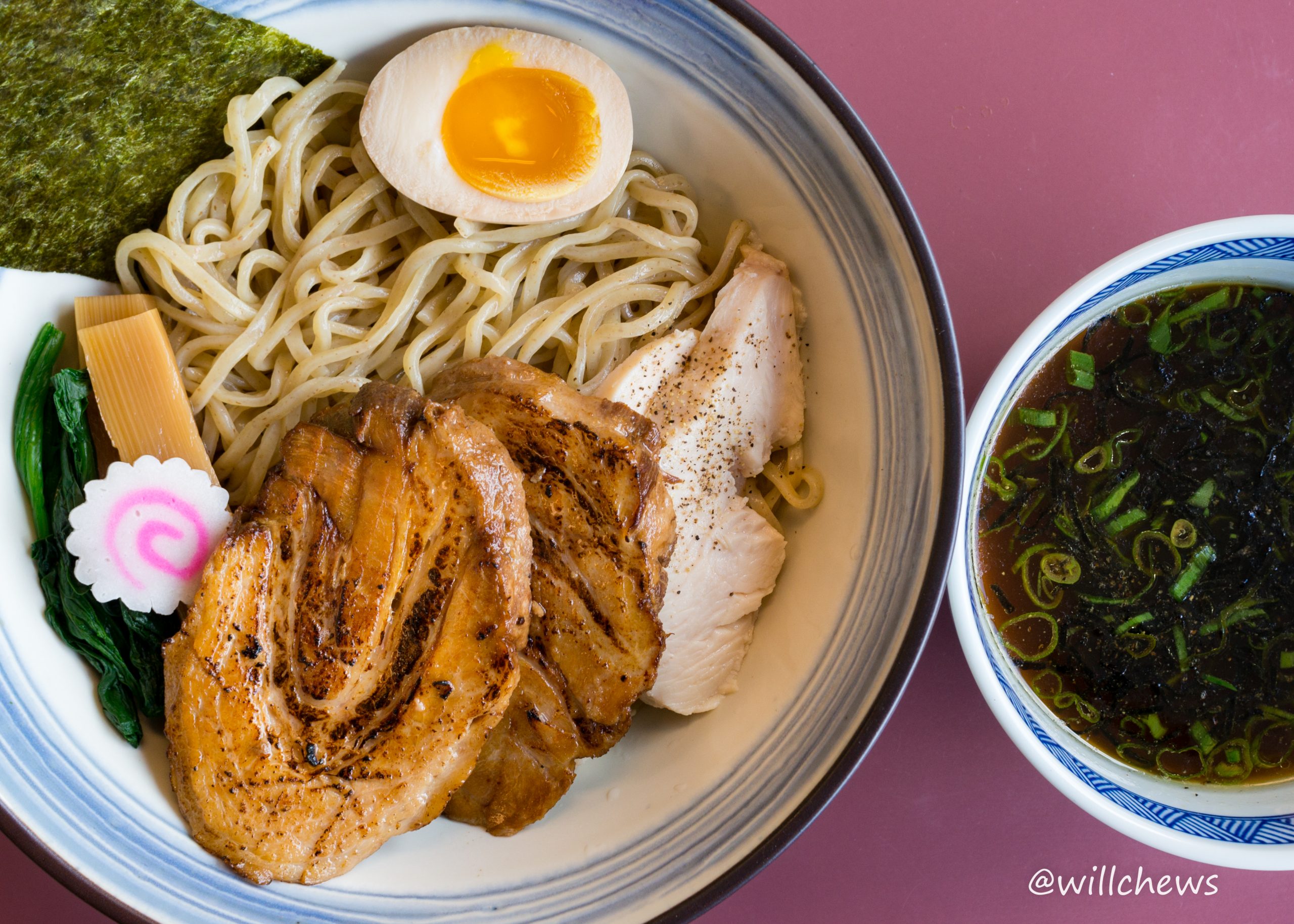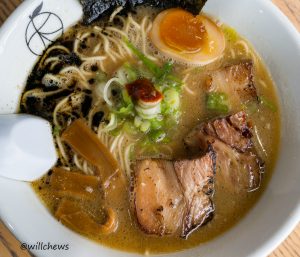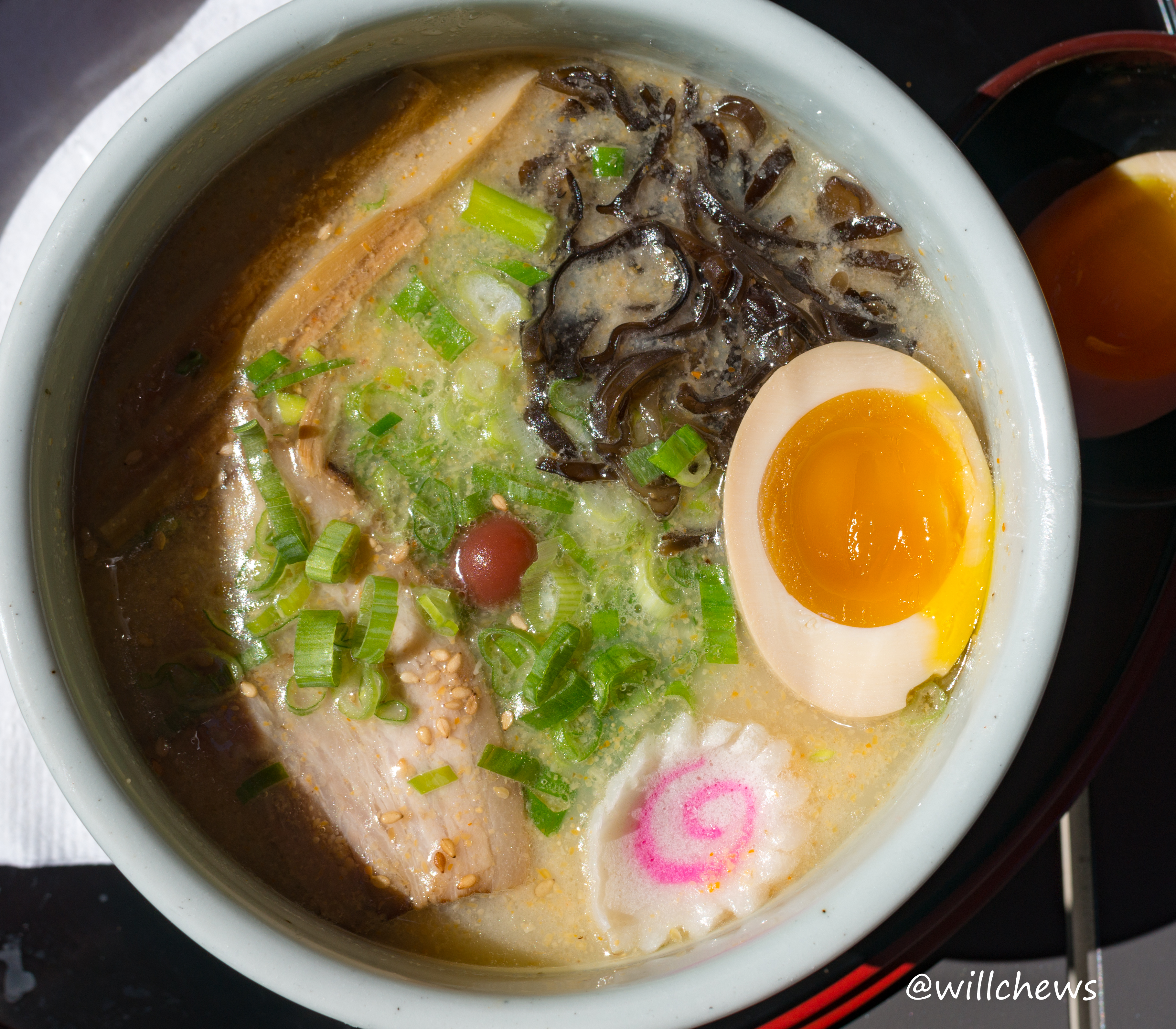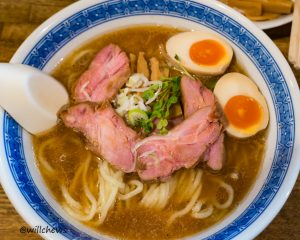In honor of Menya Hosaki’s DC grand opening on August 18, I’ll be uploading a seven-part/bowl review in the next few weeks. This is Part 3.
I’ve had tsukemen (dipping ramen) before and Hosaki’s Taishoken Tsukemen is an excellent representative of that style, but with a novel tweak that I wasn’t sure that fully worked out by the shop’s very high standards.
But first a background in tsukemen: Yamagishi Kazuo, the chef-owner of the Tokyo ramen shop Taishoken, introduced tsukemen in 1961. Featuring chilled (and comparatively thicker) noodles dipped into concentrated broth, it quickly took off and helped Taishoken grow into a chain. More importantly, it helped kick off the tsukemen craze in Tokyo and elsewhere in Japan going for 15-20 years to the point where most ramen shops usually have a tsukemen option on its menu. For instance, of the 22 Michelin-recognized ramen shops in Tokyo for 2020, 10 of them feature tsukemen on their daily menus, with possibly more offering it as a seasonal item. Tsukemen, along with chicken-shoyu and shoyu-niboshi, is a style that strongly identifiesd as “Tokyo-style,” even as its popularity has spread elsewhere in the country, and even as ramen in the US continues to be dominated by the Hakata and Sapporo styles of Japna’s bookend islands.
In all my time in Japan, I’ve never visited Taishoken before, so I’m not familiar with its style, which is a tsukemen paired with concentrated but still relatively light-bodied, clear pork broth. I’m a relative latecomer to tsukemen but have been energetic in catching up. I’ve had a plenty of tsukemen at this point and like the style quite a bit, but several tsukemen I rank very highly, all of them use heavy tonkotsu-based broth.
What Hosaki does here is to recreate a dipping broth in Taishoken’s clear-broth style by making a concentrated shoyu broth that incorporates seafood and chicken flavors for additional punch. I thought the broth in isolation was very good, but I’m accustomed to heavier, thick-bodied dipping broths that will cling to the noodles–such as the Indian curry tsukemen from Nanahasu (No. 103, review coming soon) and the tonkotsu-gyokai from Ittou (No. 118, review coming soon)–and I’m not sure the shoyu-based dipping broth really works. Despite being concentrated and a bit thicker than normal shoyu broth, it’s still far too light-bodied to cling effectively to noodles, and it’s just too concentrated to drink directly. It’s a tweener stuck in no-man’s land, in a way that I don’t think is necessary. I know Chef Eric is justly proud of this rendition of tsukement, but I hope he considers a variant with a thicker dipping broth to leverage his other components a little more effectively.
Some ramen enthusiasts have claimed that while the broth is the centerpiece in soup ramen, noodles should take that primary role in soup-modified variants such as tsukemen or soupless aburasoba. (Personally, I’ve always thought the chashu, as an universal component featuring in all subsets of ramen, is the best yardstick for most bowls) By that measure, the noodles in the Taishoken tsukemen are a success. Sourced from Shimamoto Keizo when I ate this in October 2019, they’re slightly thicker than the ramen noodles that Hosaki serves, as tsukemen noodles should be for better for mopping up the concentrated broth. Unfortunately, this is a detail that many ramen shops choose to forgo in the interests of noodle economies of scale and an under-educated clientele. But Shimamoto’s noodles were nice and firm, with enough robustness to serve as the highlight in a tsukemen dish.
Note: Because of COVID-19, Hosaki can no longer source its noodles from Shimamoto. However, Eric has been experimenting with making his own in-house. Having tasted an working sample of his tsukemen noodles in the mazesoba I had a few days ago (No. 172, review coming in a week), rest assured that they’re delicious and tick all the tsukemen noodle boxes.
All the other elements that are normally used across the entire menu–the chashu, ajitama, menma–were true to Hosaki’s established high standards. The only quibble I would have was the kamaboko, which I thought was dry and brittle, as if it had been pre-sliced and then accidentally dehydrated from being left out in the open in the fridge. But the amazing chashu, as always, balanced that out.
A final note: I brought two friends up to the ramen shop after they asked me what all the fuss was about, and it was gratifying to hear how my friend Debbie was impressed with how Hosaki was able to make chicken breast chashu taste tender and delicious. Even though she’s been to only a few other ramen shops–her daughter-in-law’s brother is the GM for another ramen shop in the DC-area–she told me, “I never knew that ramen could be good.” That’s a testament to the great and edifying work Hosaki is doing for would-be ramen enthusiasts.
Q Factor: None for seating, 45 minutes because the tonkotsu broth went bad
Sense: There’s a lot more people now, word is getting out.
Price: Taishoken Tsukemen ($17) + Tax/Tip



